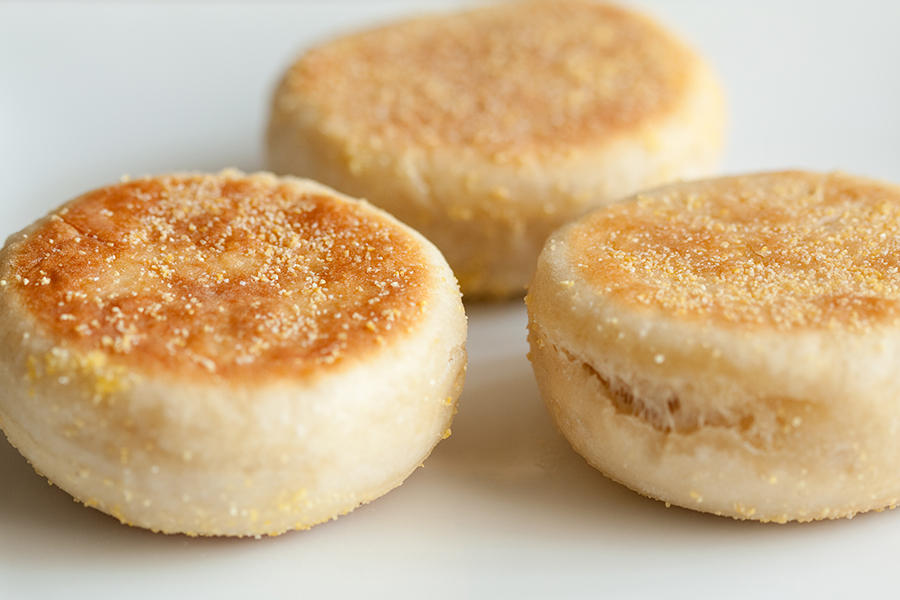Your starter is more versatile than you might think
 Given the popularity of our tips for making a sourdough starter following the onset of the pandemic and the yeast shortage it brought, we’re guessing that you all must have a starter, or levain, in the fridge by now!
Given the popularity of our tips for making a sourdough starter following the onset of the pandemic and the yeast shortage it brought, we’re guessing that you all must have a starter, or levain, in the fridge by now!
Are you getting all you can from it?
You can bake much more than basic loaves from that culture you’ve been nurturing for the last few months (if not years).
 Here, as part of a new series we like to call the Pandemic Pantry, we revisit the subject of sourdough with Baking and Pastry Arts chair Alan Dumonceaux (Baking ’05) to find out how resilient and versatile your starter is. Pandemic Pantry will feature recipes, ideas and tips from NAIT culinary alumni and instructors for the home cook to try.
Here, as part of a new series we like to call the Pandemic Pantry, we revisit the subject of sourdough with Baking and Pastry Arts chair Alan Dumonceaux (Baking ’05) to find out how resilient and versatile your starter is. Pandemic Pantry will feature recipes, ideas and tips from NAIT culinary alumni and instructors for the home cook to try.
With sourdough, you can add unexpected character to your loaves with almost any flavour you like: Thai curry, Indian spices, margherita pizza ingredients and more. But you can also make more than bread. Brownies, pancakes, waffles and, as you’ll see below, tortillas and English muffins are all possible, says Dumonceaux.
First, some basic but advanced bread making tips
It’s very hard to ruin your starter. You can leave it dormant, let it separate, miss a feeding or two. Hold back some water, add some salt and it’ll come back to the right consistency. If you see mold on the starter, however, it’s time to throw it out.
Flour type makes a difference. Use bread flour rather than all purpose. In a pinch, try unbleached all-purpose flour rather than bleached. Doing so will ensure better structure, or that network of holes, in your bread. Dumonceaux’s favourite and the one he uses at NAIT is an untreated winter wheat flour that you can find at Barb’s Kitchen Centre.
Weigh all your ingredients, instead of measuring volumes, for greater accuracy.
Now, the recipes!
Sourdough tortillas
Makes 8
Ingredients
- 328 g bread flour
- 174 g water
- 33 g olive oil
- 5 g salt
- 2 g baking powder
- 2 g diastatic malt powder
- 22 g liquid levain (starter)
Total weight: 566 g
Method
- Be sure that the levain is risen (look for lots of bubbles and flat, cracked surface) when you add it into the final dough.
- Mix by hand until all ingredients are thoroughly combined (1 - 2 minutes).
- Rest for 2 hours, give a stretch and fold (fold in from all four corners) and place in the refrigerator.
- Chill for 2 - 4 hours or overnight.
- Remove from the refrigerator, portion into 70 g pieces, then round into dough balls; cover and rest for 1 - 2 hours at room temperature.
- Roll out into a 30 cm (12") circle to about 1 mm thick. (can see counter through the dough)
- Cook in a dry skillet until slightly coloured on both sides on low heat, 2 - 3 on stove. (about 1 - 2 minutes per side).
- Serve immediately or place inside a large freezer bag and seal. Ideally you can fry a day ahead, they become softer and malleable after resting in a sealed zip-top bag.
Do not cook too long or tortillas will become brittle. Tortillas freeze well if necessary.

English muffins
Makes 12
Ingredients
- 494 g bread flour
- 62 g whole wheat flour
- 463 g water
- 11 g salt
- 3 g diastatic malt powder
- 69 g levain
Total weight: 1,102 g
Method
- Be sure that the levain is risen when you add it into the final dough.
- Mix by hand until all ingredients are thoroughly combined (1 - 2 minutes).
- Cover and rest for 1 hour, then give a four-way stretch and fold.
- Rest at room temperature for 2 hours, covered in a rectangular container.
- Refrigerate overnight.
- Next morning, remove from the refrigerator. Lightly flour a counter and gently place the dough on top. Dust top surface with flour to prevent the rolling pin from sticking.
- It is important not to stretch or squeeze the dough; try to keep the original shape.
- Place a frying pan on the stove and turn the heat on low to medium heat.
- Using a rolling pin, gently roll to 1 1/2 to 2 cm thick. Added flour underneath as necessary. If you don’t have enough flour the dough will stick to your counter and when you try to remove them they will be misshaped. If that happens, gently fold the scraps together, cover and rest for 20 minutes and then roll again.
- Using a circle cookie cutter 7.6 cm (3") in diameter cut straight down into the dough. It is important to minimize waste, so cut as close to the previous circle as possible.
- Lightly dust the heated frying pan with cornmeal and place 4 English muffins in the pan and cover with a lid.
- Cook for about 5 minutes per side, flipping halfway. The dough should rise noticeably once added to the frying pan and again when you flip.
- Cut in half to make a breakfast sandwich or to toast.
